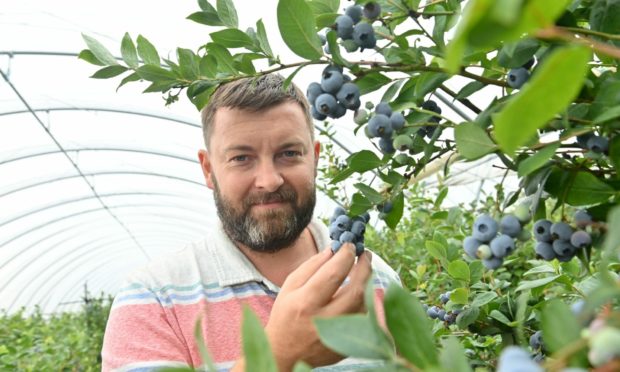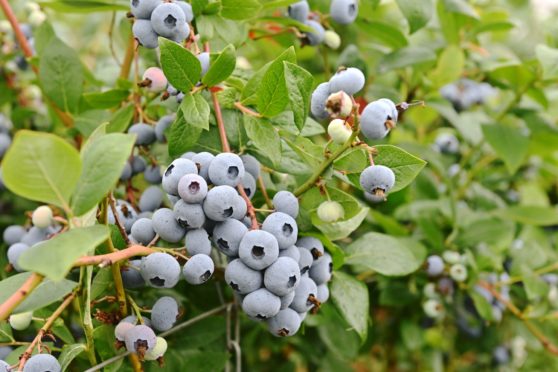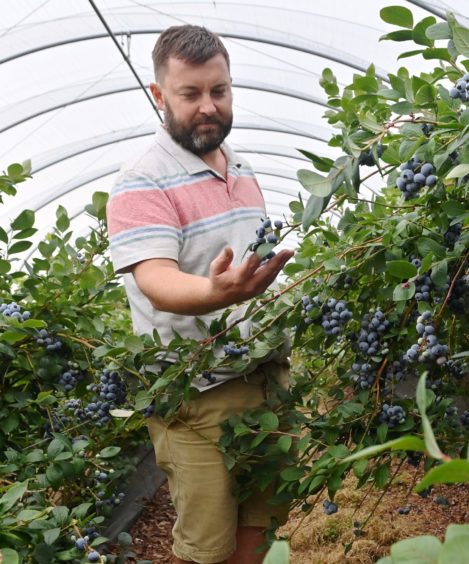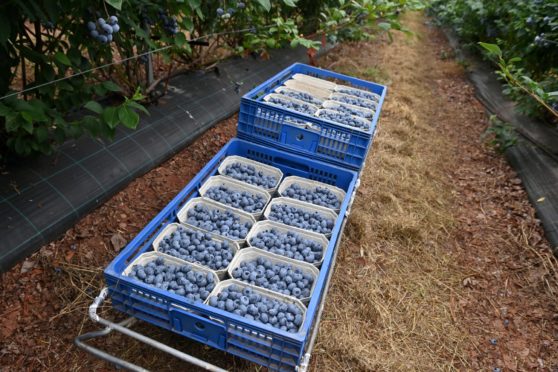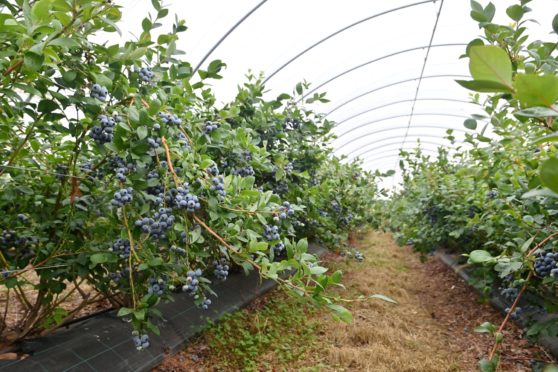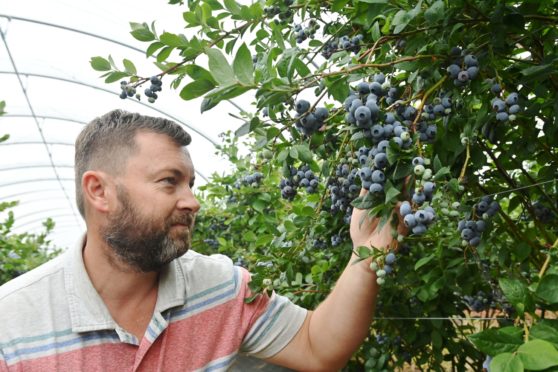As part of our Farm to Fork series, Brian Stormont caught up with Ross Mitchell of Castleton Farm to find out more about the team’s blueberry production.
Castleton Farm prides itself on producing the best traditional Scottish food, all grown, picked and processed on the 1,400-acre family farm, which lies in the heart of the Howe of the Mearns in Aberdeenshire.
The farmed area is split between soft fruit, arable rotation, cut flowers and potatoes.
Ross Mitchell, who runs the farm alongside his mum and dad Rhoda and Murray, and wife Anna, oversees the production of fruit on the land. This fruit includes premium quality strawberries, raspberries, cherries and blueberries.
Of the 1,400 acres that Ross farms, 412 produce soft fruit across two sites, at Castleton and nearby Inchgray at Fettercairn. And of those 412, 168 acres are planted with blueberries, 40 acres in pots.
11 different varieties
Darrow, Chandler, Liberty, Bluecrop, Jolene, Cargo, Valor, Top Shelf, Barbara Anne, Seqoya Grande and Seqoya Crunch are among the different varieties of blueberries that Castleton offers.
There has also been a large investment into Seqoya blueberry genetics from Fall Creek, with the first fruit becoming available in 2022.
This list has been growing since 2005, which is when the farm first started producing the berries.
“We started growing fruit here in 1992,” Ross said.
“Then we put in our first polytunnels in 2000, so 21 years ago was when we first started growing undercover.
“We started growing blueberries in 2005. That was our first blueberry plantation and it was one of the first in Scotland.
“Our harvest runs from the middle of July right through to the end of October. We plant the bushes every year and they will crop roughly for about 15 harvests.”
Being more northerly than many soft fruit growers, the combination of long daylight hours and a cooler Scottish climate allows the fruit to ripen slowly at Castleton, creating more sugars and producing a delicious sweet berry.
Health benefits
Blueberries are native to North America and related to a similar fruit, known as a bilberry – or blaeberry in Scotland – that grows in the wild in the UK.
Ross believes consumers love blueberries for their vibrant colour, sweet yet tart flavour and delicious smell. They also add a bold punch of vibrancy to any smoothie or baked dessert and are packed with vitamins and healthful antioxidants.
The blueberry (vaccinium myrtillus) was one of the first foods to be titled a “superfood” and they contain one of the highest antioxidant levels amongst commonly consumed fruit and vegetables.
Ross added: “What sets our blueberries apart is the quality of the fruit.
“The alternatives on the supermarket shelves might be imported because a lot of blueberries are. But the UK, and especially the Scottish season, extends right from September through October and that’s when they’re at their absolute prime.
“Blueberries are a versatile fruit and can be eaten at any mealtime. Kids love them, they’re so good for you, are very snackable and are the ultimate superfood.”
Local and national success
Castleton Farm has been practising regenerative farming since 2018, an approach centred around improving and revitalising soil health. Over 700 acres are covered on the farm by regenerative agricultural practices.
The team harvest fruit for nine months of the year, from March through to the first weeks of December, and supply multiple retailers.
“Our main customers are Marks & Spencer, Tesco and Waitrose,” Ross added.
“And in total, we employ over 600 people to harvest the fruits.
“In 2020, we packed and sent 8.5 million punnets of soft fruit for the fresh market from Castleton Farm.
“Our branded punnets are enormously popular in the local area. Local sales, including from our farm shop, account for 3% of total sales. Turnover from sales of soft fruit is in excess of £13 million.”
Castleton Farm is taking part in the new Provenance Festival, which is running from September 24 to October 3, to offer blueberry picking as an activity.
The first session takes place from 10am to 11am on Tuesday September 28 with the second taking place at the same time on Wednesday September 29.
For more information on Castleton Farm, visit castletonfarmshop.co.uk
